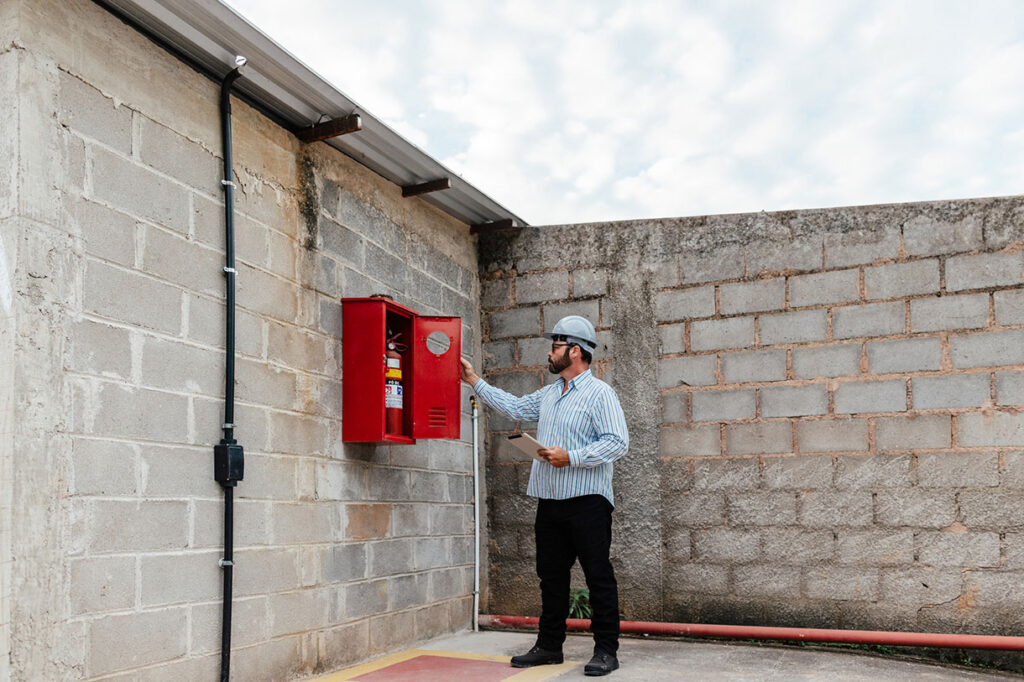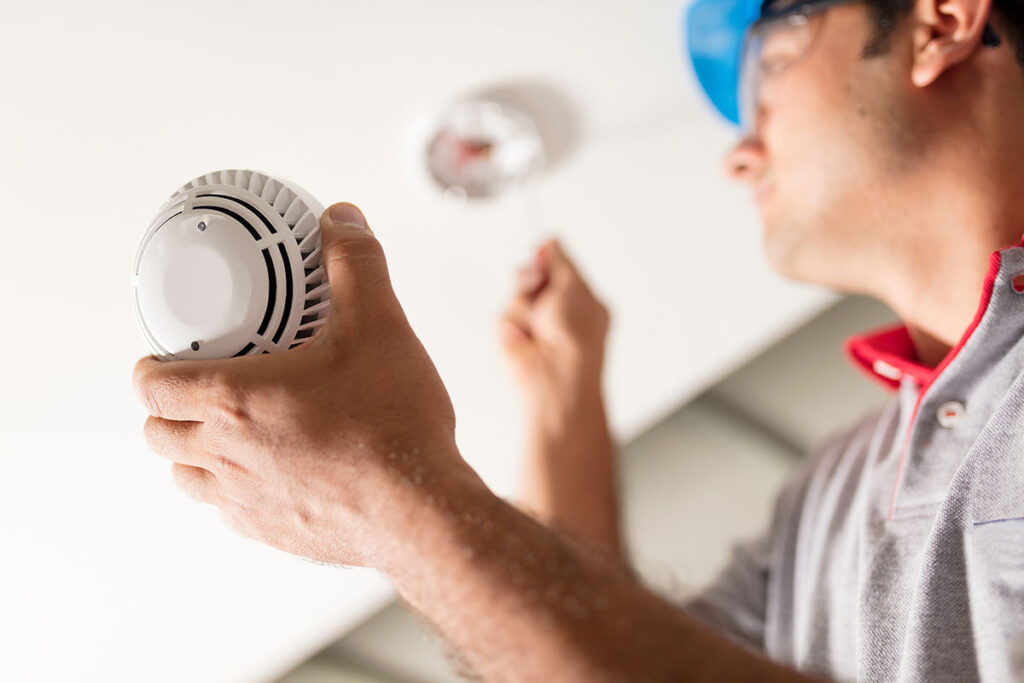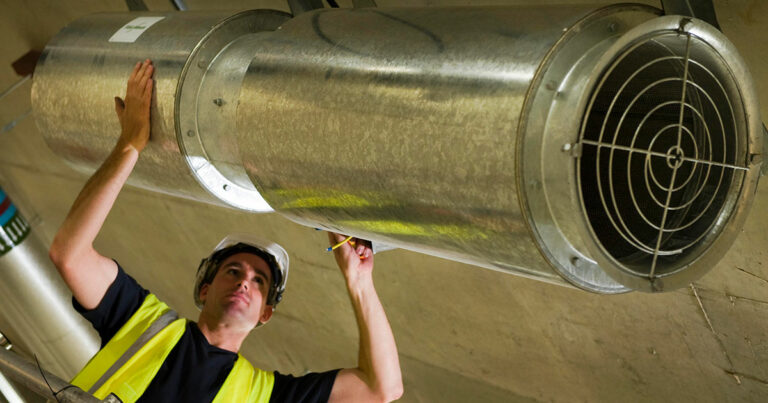Staying compliant with fire safety law isn’t just about installing the right equipment – it’s about maintaining that equipment.
The Regulatory Reform Order 2005 (often called the RRO or RRFSO) is the cornerstone of fire safety obligations in England and Wales. For building owners and facility managers, one of the key duties under the RRO 2005 is to keep all fire safety systems (including smoke ventilation) in good working order.
Below, we break down what the law requires, why it matters, and how to fulfil your duty to maintain smoke ventilation systems.
What the RRO 2005 Says About Maintenance
Under Article 17 of the Regulatory Reform Order 2005, the “responsible person” (e.g. building owner, employer, or manager in control of the premises) must ensure that any facilities, equipment and devices provided for fire safety are “subject to a suitable system of maintenance” and kept “in an efficient state, in efficient working order and in good repair.”
In plain terms, if you have smoke control equipment (such as automatic opening vents, smoke extract fans, dampers, etc.), you are legally obligated to service and fix them regularly so that they will function as designed in an emergency.
Importantly, the RRO doesn’t spell out exact servicing intervals or methods; it leaves it to the responsible person to implement a “suitable system” of maintenance based on risk. This means you should follow relevant British Standards and industry guidance to define what “suitable” maintenance is for smoke ventilation.
For instance, codes like BS 7346-8 and fire safety design guides (BS 9999, BS 9991) provide recommended maintenance schedules (e.g. weekly checks, quarterly servicing) for smoke control systems. Adhering to these standards is usually seen as meeting your obligations under the RRO. In contrast, doing nothing, or doing less than industry best practice, could be deemed a breach of the law.
Why This Duty Matters: Safety and Liability
Life safety implications: Smoke ventilation systems are life-saving installations. If they’re not maintained, they might fail during a fire, leading to smoke-clogged escape routes even if your alarms are working.
The tragic Grenfell Tower fire in 2017 underscored this point: the building’s mechanical smoke extraction system was in poor repair and hadn’t been properly maintained or tested, which contributed to deadly smoke spread.
The RRO’s maintenance requirement is designed to prevent such scenarios – by mandating proactive upkeep, the law aims to ensure your smoke vents will protect occupants when it counts.
Legal and financial consequences: Failing to uphold Article 17 is a criminal offence. Authorities can serve enforcement notices, and in serious cases, prosecutions can lead to heavy fines or even imprisonment for those responsible. The aftermath of a fire is the worst time to discover that a smoke vent was non-functional due to neglect – not only could this worsen the fire’s impact, but investigations will scrutinise your maintenance records. In short, compliance isn’t optional.
In the words of one summary of UK regulations, life safety systems must be maintained in efficient working order and undergo regular testing. Skimping on maintenance not only endangers lives but also exposes you (and your organisation) to legal liability and insurance nightmares.
Regulatory oversight: Fire authorities (the local fire and rescue service) are empowered to ensure you meet the Regulatory Reform Order 2005 duties. During audits or after incidents, they routinely ask for maintenance records as proof of compliance. If you can’t demonstrate a “suitable system of maintenance” – for example, if servicing is infrequent or records are incomplete – they may consider you in breach of the RRO.
This can result in enforcement action such as an official notice to improve, or worse, a prohibition notice shutting down parts of the building until issues are fixed. Compliance is not just about avoiding punishment; it’s about demonstrating to regulators that you are proactively managing fire safety.

How to Fulfil Your Maintenance Obligations
Follow scheduled maintenance plans
Implement a planned preventative maintenance (PPM) schedule for your smoke control system in line with guidance. Typically, this will include weekly functional checks, monthly visual inspections, quarterly or biannual service visits by a competent technician, and a full annual service.
For example, a common regime (based on BS 9999 Annex I) is weekly testing of different smoke zones in rotation, quarterly professional inspections, and an extensive yearly maintenance by a certified specialist. Ensure these tasks are assigned and never skipped – consistency is key to a “suitable” system of maintenance.
Engage competent persons
The RRO also requires that maintenance be done by people with adequate qualifications and training (often termed a “competent person”). Do-it-yourself fixes by untrained staff won’t suffice for specialised systems like smoke vents.
Use qualified smoke ventilation engineers or companies with appropriate certification (for instance, firms certified under the IFC SDI-19 scheme for smoke control systems). UK authorities emphasise that smoke control systems should be maintained by a competent person familiar with that specific system’s fire engineering design. In practice, this means using a smoke vent specialist rather than assuming a general maintenance or fire alarm contractor can cover it. Having the right expertise on the job fulfils your duty and gives you confidence in the results.
Keep records of everything
As noted in the first article, diligent record-keeping is a key component of compliance. Document all maintenance activities in your fire safety or smoke vent logbook. This demonstrates your Regulatory Reform Order 2005 Article 17 duties are being met.
If an enforcement officer visits, you can open the log to show, for example, that “every Tuesday a different AOV is tested, a certified engineer did the last quarterly service with no outstanding faults, and here is the latest annual certificate.” Such records not only satisfy the law’s requirements but also make it easier to manage maintenance internally, by tracking when the next service is due.
Address defects promptly
Maintenance isn’t just about scheduled checks – it’s also about reactive repairs. If a fault is found (say, a vent motor failure or a control panel fault alarm), fix it as soon as possible and log the fix. The Regulatory Reform Order 2005 expects that things are kept in working order, so allowing known problems to linger is not acceptable. In high-rise residential buildings, new regulations even require that any fire safety equipment fault that can’t be fixed within 24 hours be reported to the fire service, underscoring how urgent repairs are in the eyes of regulators. Make sure your maintenance contract or internal processes include rapid response for critical faults.
By taking these steps:
- Regular servicing
- Competent technicians
- Thorough record-keeping
- Prompt repairs
You will meet your obligations under RRO 2005 and, more importantly, keep your building’s occupants safe. Maintenance of smoke ventilation systems is not optional; it’s a continuous duty that lies at the heart of fire safety compliance.
Smoke Ventilation System Maintenance
Shouldering the responsibility of RRO compliance can be challenging, but FDS Maintenance is here to help you every step of the way. Our team of smoke ventilation specialists are well-versed in RRO 2005 requirements and British Standards, ensuring your systems stay in efficient working order and your paperwork stays in order.
Contact FDS Maintenance today to schedule a compliant maintenance program that keeps your smoke vents – and your building, fully within the law.





